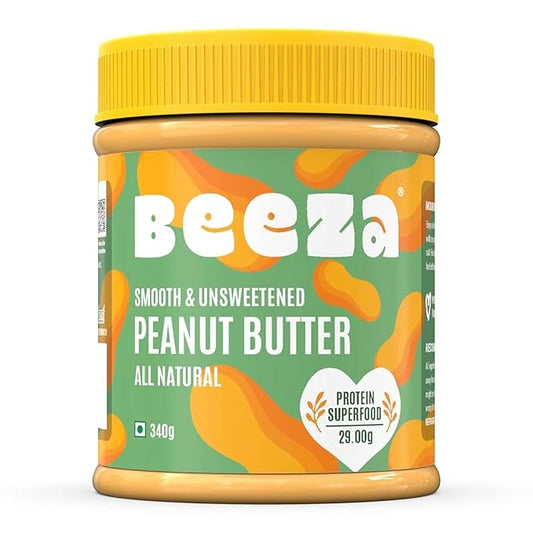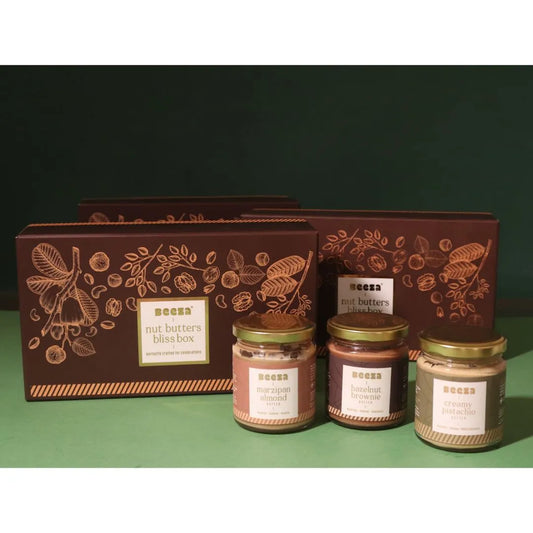Understanding Peanut & Tree Nut Allergies: A Complete Guide for Safe Eating
Nut allergies are among the most prevalent - and serious - food allergies that millions of people throughout the world live with. For those who suffer from nut allergies, making daily food selections can feel like walking through a minefield. This guide is designed to increase their understanding of nut allergies, recognize symptoms and learn how to manage nut exposure comfortably.
What Are Nut Allergies?
A nut allergy occurs when your body's immune system mistakenly recognizes the proteins in nuts as harmful and triggers an allergic reaction. The reactions can vary from mild itching to serious life-threatening anaphylaxis. For some, even tiny traces of nuts can trigger a response. Nut allergies generally begin in childhood and continue to persist throughout life.
Common Tree Nuts That Cause Allergies
- Almonds
- Walnuts
- Cashews
- Pistachios
- Pecans
- Hazelnuts
- Brazil nuts
- Macadamia nuts
Symptoms of Nut Allergies
Reactions to nuts can be variable, can be mild or severe, and can happen anywhere from minutes to hours after exposure to nuts. The symptoms can be a variety of things and can affect different parts of the body:
Skin: Hives, rash, itchy skin, swelling (lips, face, eyes).
Digestive: Nausea, stomach cramps, vomiting, diarrhea.
Respiratory: Wheezing, shortness of breath, coughing, throat swelling, nasal congestion.
Cardiovascular: Dizziness, lightheadedness, pale skin, weak pulse (anaphylaxis).
Other: Tingly mouth, feeling of impending doom.
Anaphylaxis can be the most serious reaction; anaphylaxis can involve multiple body systems, and the symptoms may consist of sudden blood pressure drops and severe difficulty breathing, and/or loss of consciousness. Anaphylaxis can be extreme and requires medical help, along with an epinephrine auto-injector (EpiPen).
Peanut vs Tree Nut Allergy: Are They Related?
This is a very common question, and could be confusing! Here's the scoop:
Peanuts are not a nut. Surprise! Botanically speaking, peanuts are legumes - just like beans and lentils - which grow underground.
Tree nuts do grow on trees (think almonds, walnuts, cashews, etc.).
So, they are different plants, but many people who are allergic to peanuts are also allergic to one or more tree nuts, and vice versa. This is because the immune system senses the similar proteins found in both nuts, and this is known as cross-reactivity. For this reason, even though nuts are not related, physicians often advise people with one allergy to use caution or avoid the other, particularly in relation to children, just to be safe. Always consult with an allergist for the best advice for your individual situation.
How to Manage Nut Allergies
Nut allergies can be managed with a few steps:
The key idea here is avoiding nut exposure.
Avoidance: The single best advice is to avoid nuts.
Reading Labels: Always read labels for nut ingredients and "may contain" warnings.
Communication: Inform family, friends, and restaurant staff of your allergy.
Avoiding Cross-Contamination: Use caution for surfaces or utensils that may have also touched nuts.
Carry Medication: Always carry your prescription emergency meds (like an EpiPen) and know how to use them.
Create an Action Plan: Work with your doctor to establish a plan to follow for reactions.
Tips for Shopping Nut Butters With Allergies
1. Understand How to Read Allergy Labels
Learning to use labels is essential. Look for phrases such as:
“Made in a facility with…”
“May contain traces of…”
“Manufacturer on shared equipment…”
“Nut-free or allergen-free” certifications
These warning labels can help you make your decisions based on the risk of cross-contamination made by the company, especially if you or the person living with you has a severe allergy.
2. Understand your Brand's Safety Practices
Choose a brand that is honest and clear. At Beeza, we list all potential allergens on every label of product we have. We also have options that are nut-free, and use dedicated production lines where we can to eliminate the risk of cross-contact.
3. Choose Certified Nut-Free Choices
When completely avoiding nuts, choose products made in nut-free facilities with certified seed butters (sunflower or pumpkin seed spreads).
4. Avoid the Bulk Bins
Bulk bins are the largest source of cross-contamination due to shared scoops, as well as open exposure.
5. Always Contact the Brand when in doubt
Any reputable company will inform you of any of the details about their allergen protocols and facility.
6. Go Homemade Any Time
If you absolutely need seed butters, making them in your own home is the safest and customizable option, especially for severe allergies.
Nut-Free Alternatives
You don’t have to give up creamy spreads just because you are living with a nut allergy! Here are some great nut-free alternatives:
Sunflower Seed Butter: if you are looking for a flavor similar to peanut butter, this is a great choice and will work great in many recipes.
Soy Butter: this is another well-known alternative that has a similar texture to peanut butter but remember to check for a soy allergy!
Tahini: this is a paste made from sesame seeds and works well for savory options or sweet options when combined with honey.
Pumpkin Seed Butter: this is another nut-free option that has an earthy flavor.
Granola Butter: blend of oats and seeds that is a newer nut-free option that offers great flavor.
When to See a Doctor or Get Tested
If you suspect that you or someone you are with has a nut allergy, you should seek physician advice. However, the key points are when to seek help:
After a reaction: Detecting a nut allergy can be difficult. Even if the symptoms were mild, following a suspected allergic reaction to nuts, you should have it checked by a physician.
For confirmation of diagnosis: The allergist will conduct certain tests (skin prick test, blood tests) to confirm if it is in fact a nut allergy.
To develop an action plan: Once you have received a diagnosis, the allergist will develop a personalized plan to manage the allergy, and prescribe emergency medications (epinephrine auto-injector or similar).
Routine follow up visits: During the routine visit, the allergist will have you review your management plan, develop a plan of action and address concerns.
Conclusion
Managing a nut allergy is really about being aware and prepared. By knowing your triggers, thoroughly reading labels, being assertive, and having a plan, you can live safely. As there are more nut-free options and better clarification, it is becoming easier to move about life with a nut allergy. Stay informed and work with your doctor for the best support.











